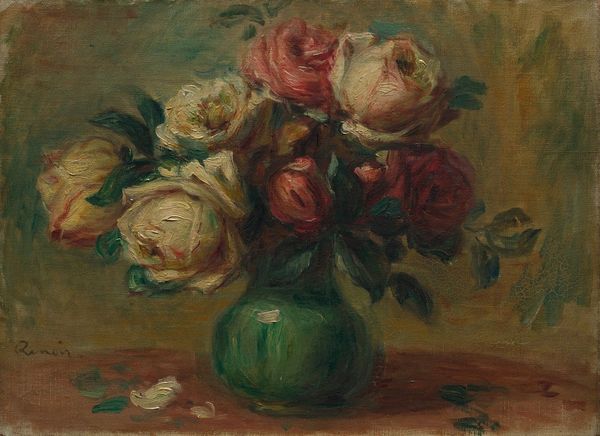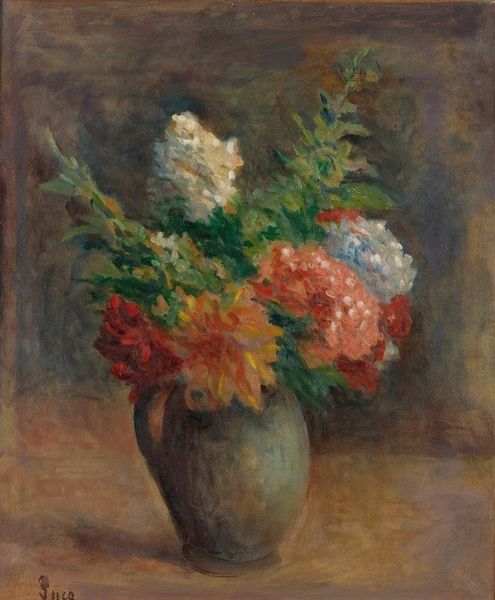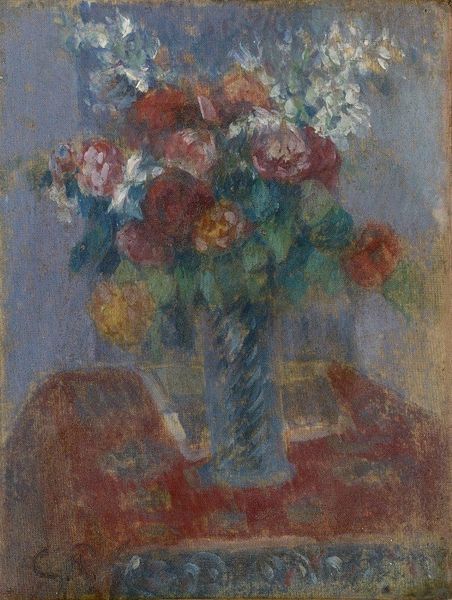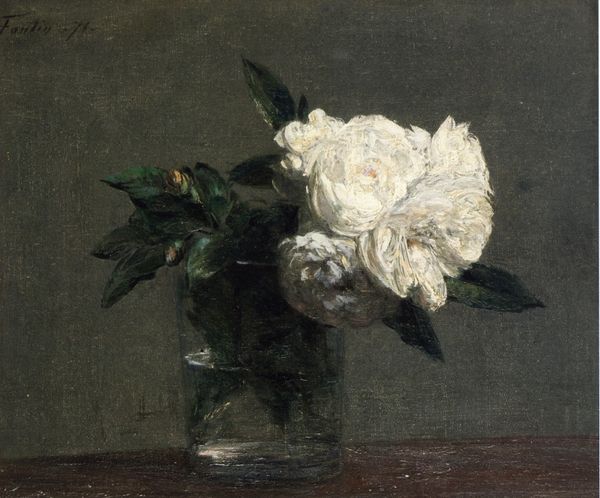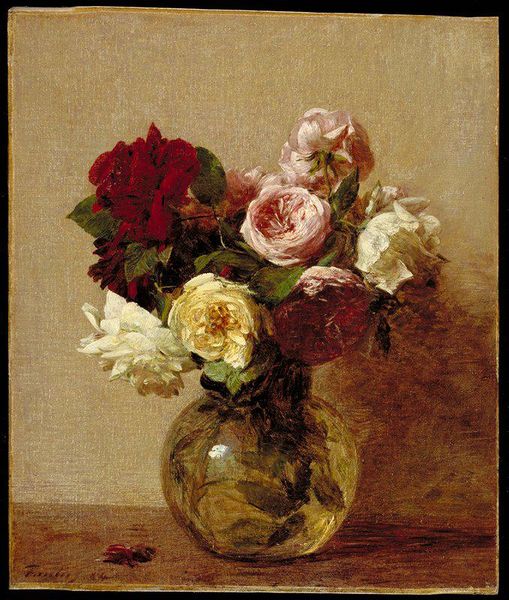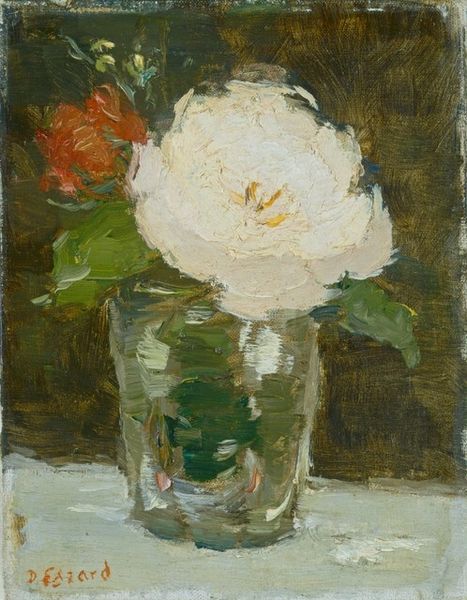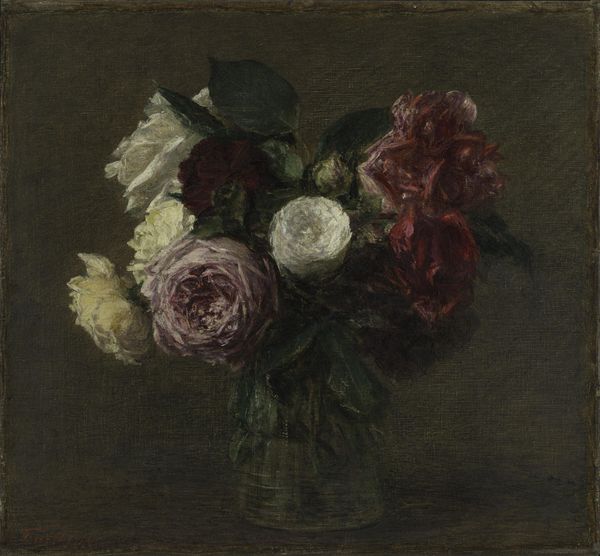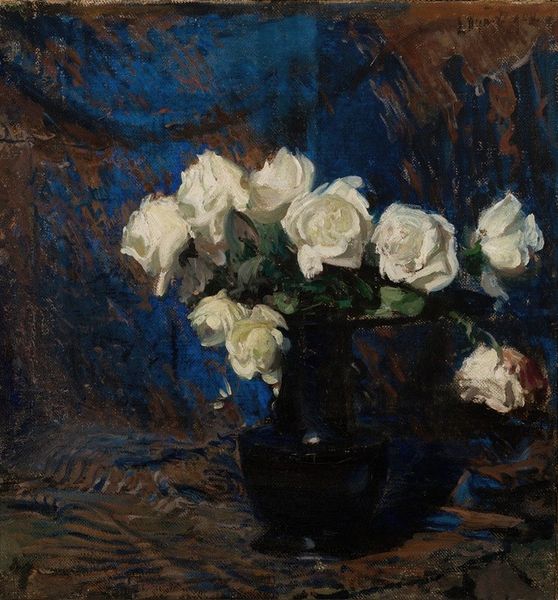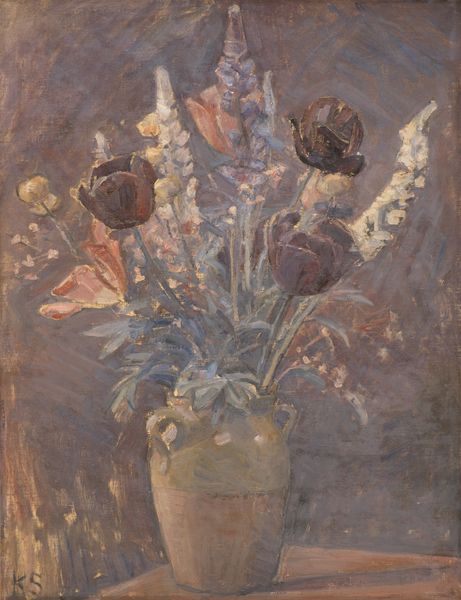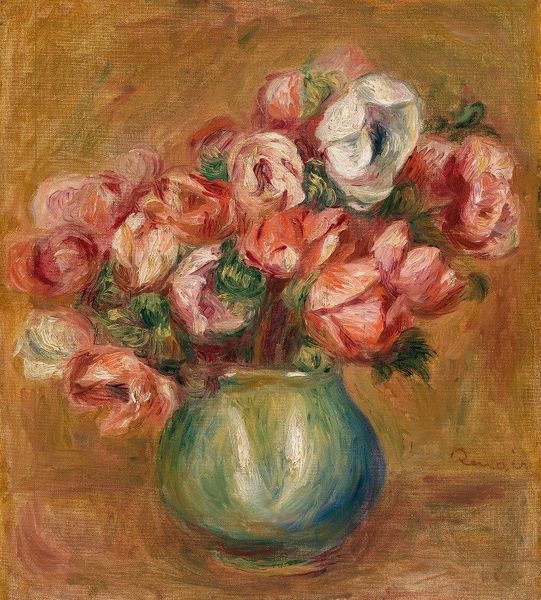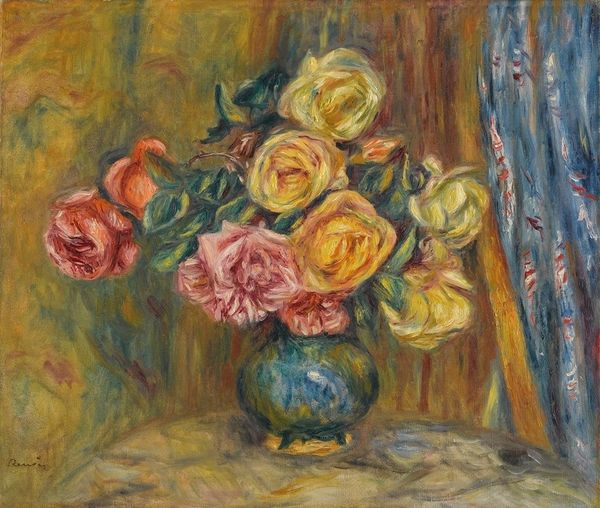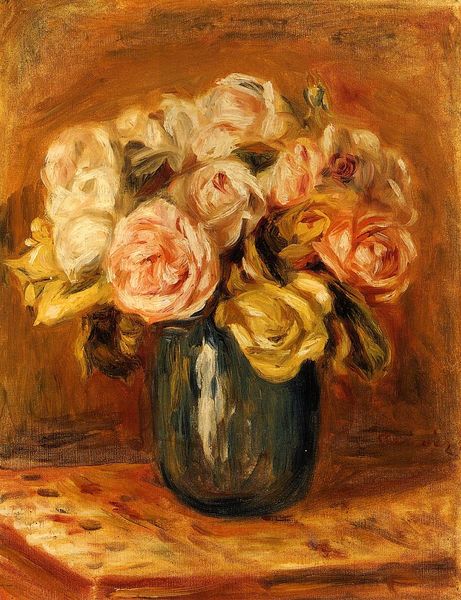
Dimensions: 46.4 x 55.4 cm
Copyright: Public domain
Paul Cézanne, a French artist, painted 'Rose Bouquet' with oil on canvas, sometime around the turn of the 20th century. This painting is more than just a simple still life; it reflects the changing attitudes toward art and representation during a period of significant social and cultural transformation. Made in France, a nation at the heart of artistic innovation, this work comes from a time when artists were starting to question the established norms of academic painting. Instead of aiming for perfect realism, Cézanne explores how the artist's subjective perception can shape the artwork. The roses aren't just pretty flowers; they're a vehicle for Cézanne to investigate form, color, and composition, pushing the boundaries of what painting could be. To truly understand this painting, we can explore the art criticism of the time, exhibition reviews, and Cézanne's own letters. This helps us understand how 'Rose Bouquet' challenged the artistic institutions of its day. It demonstrates how a seemingly simple subject could become a radical statement about the nature of art itself.
Comments
No comments
Be the first to comment and join the conversation on the ultimate creative platform.
